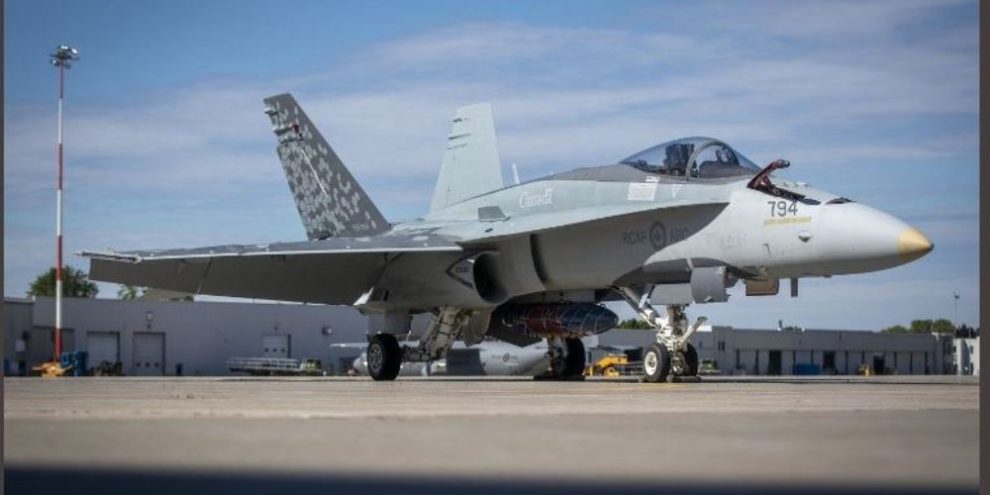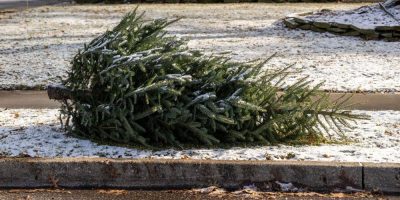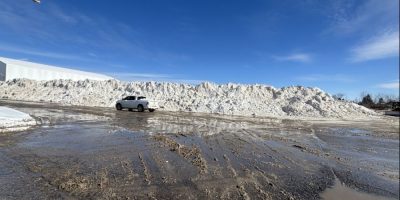
By Lee Berthiaume in Ottawa
U.S. President Joe Biden's long-anticipated first trip to Ottawa this week is expected to put the state of North America's defences and Canada's military spending back under the microscope.
American presidents have a long history of pushing Canada to spend more on its military, including Barack Obama in a speech to Parliament in 2016 and Donald Trump during a NATO summit in 2019.
Such pressure has come as Canada has failed to spend two per cent of its national gross domestic product on defence, as agreed by all NATO members, and instead lagged most of its allies on military spending.
Experts say they fully expect Biden to follow the same script when he visits the capital on Thursday and Friday, particularly in light of recent events such as Russia's invasion of Ukraine and rising concerns about China.
"I don't remember a time that a U.S. president wasn't calling for allies to be spending more on defense, including Canada," said University of Ottawa professor Roland Paris, who served as foreign policy adviser to Prime Minister Justin Trudeau.
"But the context has changed. The world is much more dangerous."
U.S. Ambassador to Canada David Cohen made a similar point to CTV over the weekend, saying of Biden's visit: "How we fund our 21st-century defence efforts in order to confront 21st-century threats will be a topic of conversation."
Defence Minister Anita Anand said Tuesday that Canadian defence spending is on an "upward trajectory" as she rhymed off a list of investments that the Liberal government has made and plans to make over the coming years.
Those include an additional $8 billion included in last year's federal budget and nearly $40 billion over 20 years to modernize Norad, the joint U.S.-Canada military command responsible for protecting North America.
"This is the work that I and our government are doing every day to ensure that the Canadian Armed Forces have what they need to fight and win," she said while announcing $1.4-billion upgrade to the training facilities for the military's Joint Task Force 2 special forces unit.
Even with those commitments, however, Canada is expected to spend only about 1.5 per cent of GDP on defence by 2027. NATO estimates it spent 1.27 per cent of GDP on the military last year, down from 1.32 per cent in 2021 and 1.42 per cent in 2020.
Successive governments have insisted the spending target is a guideline rather than a requirement, but NATO Secretary General Jens Stoltenberg indicated last month that members may make it a hard target. Some allies have also suggested raising it.
David Perry, president of the Canadian Global Affairs Institute thank tank, said the government's lack of commitment to hitting the target, "is increasingly conspicuous with NATO as the rest of the alliance moves in that direction."
There is clear doubt over whether an entreaty by Biden or growing instability around the world will open Ottawa's wallet, particularly as the Liberal government deals with other priorities while facing pressure to rein in spending.
Carleton University professor Philippe Lagassé, who previously served on an independent panel charged with assessing military procurements, said there is little political benefit for the government to dramatically ramp up defence spending or meet the NATO target.
"If you're in Europe right now and you're Japan, for myriad reasons, you're looking at the world and you're saying: 'On the list of priorities I have to deal with right now, the threat of a neighboring power is significant. So I'm going to invest significantly in my defence," he said.
For Canada, Lagassé said, "it's difficult for me to accept or think that right now, the defence piece is going to win out. Hospitals are collapsing, you name it. There are many other things where people would want to prioritize, and that's just the popular will."
Even if the government wanted to invest billions of additional dollars in defence, Lagassé said there is no way the military could absorb or use the money efficiently given the number of procurement projects already in train — many of which are facing delays.
Yet analysts say Canada's failure to take defence issues seriously is one of the reasons it is now struggling to replace aging equipment.
That includes modernizing Norad, which was thrust into the limelight last month after a suspected Chinese spy balloon and several other objects were shot down in North American airspace.
Cohen indicated the U.S. is waiting for more details from Ottawa on its plan to contribute to continental defence, saying the current threat environment "would call for an earlier investment than the current plan by the Canadians."
The commander of Norad, U.S. Gen. Glen VanHerck, also underscored the need for urgency during a recent defence conference in Ottawa, saying: "We need to move faster, with a sense of urgency to make sure that we field them as soon as possible."
VanHerck also revealed he is still waiting for Canada to tell him what the updated Norad system needs to protect, information that will be critical to deciding what the joint U.S.-Canadian command will — and will not — include and do.
Asked about those comments this week, Anand said: "There are a number of projects we need to continue to expedite, and I am always pushing our team to work as quickly as possible. But I want to reiterate this is a process. It will take time."
Royal Canadian Air Force commander Lt.-Gen. Eric Kenny in a recent interview said military officials were moving as quickly as possible in developing and deploying a series of long-range radars, satellites and other technology to protect the continent over the next decade.
University of Manitoba associate professor Andrea Charron, one of Canada's foremost experts on Norad, said there remain many unanswered questions about how all of those initiatives will roll out — and when.
"What I'd really like to see is somebody start to come up with some dates to say: 'Okay, by this date, we've got to at least have identified the receiving and transmission sites," she said. "Even if we pick them out of thin air, so we start to have something to work towards."
Banner image: THE CANADIAN PRESS/Lars Hagberg
This report by The Canadian Press was first published March 22, 2023.





